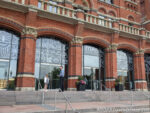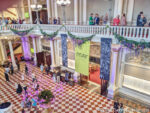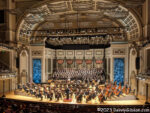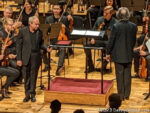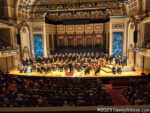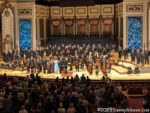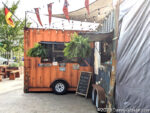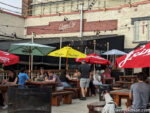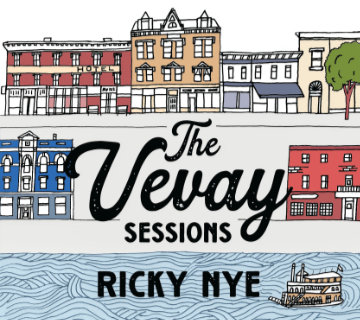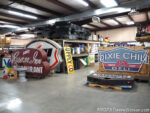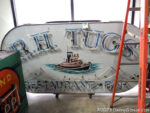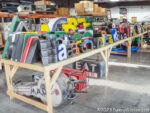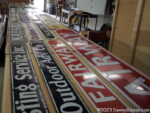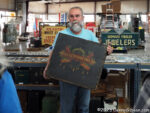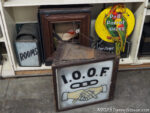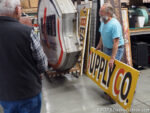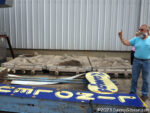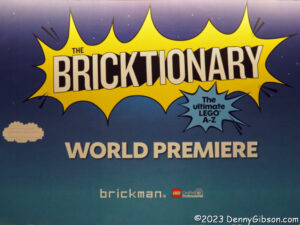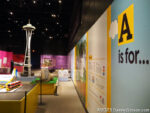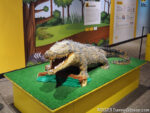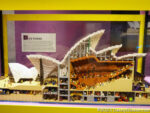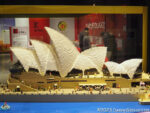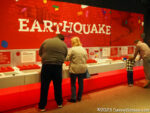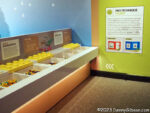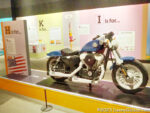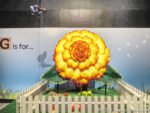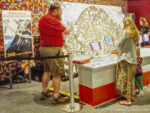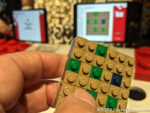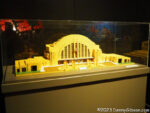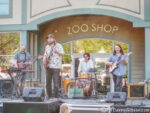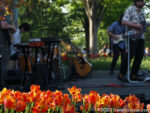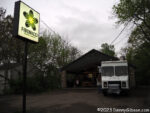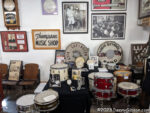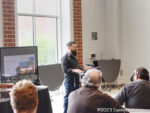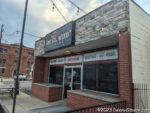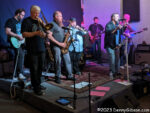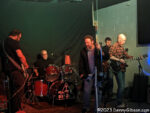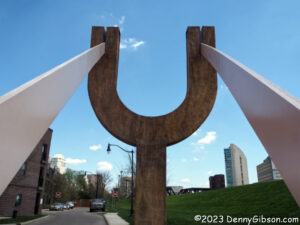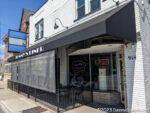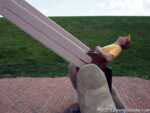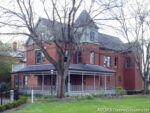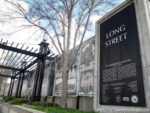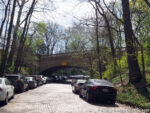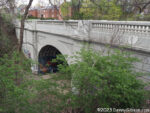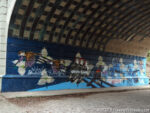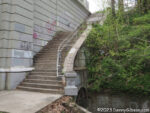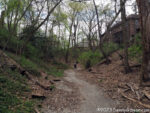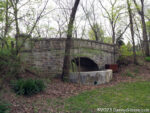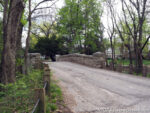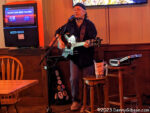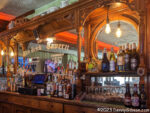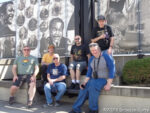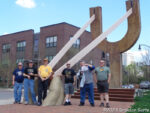 Just a day shy of two years ago, I attended an open house at Vent Haven in Fort Mitchell, KY. My report on that visit is here. There would be just two more open house events before “the world’s only museum dedicated to ventriloquism” closed for a major expansion in September 2021. When I wrote about the open house, I was surprised and somewhat embarrassed to see that nearly ten years had passed since my one and only previous visit. I resolved to do better and have succeeded in returning almost as quickly as possible. There was a big invitation-only Grand Re-Opening on Saturday, tours for the general public resumed on Tuesday, and I joined the first tour of the day on Wednesday.
Just a day shy of two years ago, I attended an open house at Vent Haven in Fort Mitchell, KY. My report on that visit is here. There would be just two more open house events before “the world’s only museum dedicated to ventriloquism” closed for a major expansion in September 2021. When I wrote about the open house, I was surprised and somewhat embarrassed to see that nearly ten years had passed since my one and only previous visit. I resolved to do better and have succeeded in returning almost as quickly as possible. There was a big invitation-only Grand Re-Opening on Saturday, tours for the general public resumed on Tuesday, and I joined the first tour of the day on Wednesday.
 This picture of the new building sort of shouts out how one of the museum’s old shortcomings has been overcome in a big way. Previously, very little of the museum was truly handicapped-accessible. Now, not only are the museum’s exhibits accessible with wider doors, no steps, and space for wheelchairs, there is handicapped parking right at the front door. Not only that, non-handicapped patrons no longer have to seek an open spot on the street but can pull into the convenient lot in the back. Another change of at least equal magnitude is the absence of the “go before you get here” warning that used to be given to everyone registering for a tour. Inside that door is a lobby, gift shop, and PUBLIC RESTROOM.
This picture of the new building sort of shouts out how one of the museum’s old shortcomings has been overcome in a big way. Previously, very little of the museum was truly handicapped-accessible. Now, not only are the museum’s exhibits accessible with wider doors, no steps, and space for wheelchairs, there is handicapped parking right at the front door. Not only that, non-handicapped patrons no longer have to seek an open spot on the street but can pull into the convenient lot in the back. Another change of at least equal magnitude is the absence of the “go before you get here” warning that used to be given to everyone registering for a tour. Inside that door is a lobby, gift shop, and PUBLIC RESTROOM.
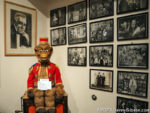
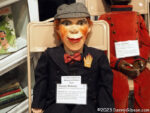 A couple of figures near the start of the tour were familiar to me. Tommy Baloney was the first dummy museum founder W. S. Berger ever owned. He was purchased in 1910. The McElroy Brothers made Jocko for Mr. Berger around 1940.
A couple of figures near the start of the tour were familiar to me. Tommy Baloney was the first dummy museum founder W. S. Berger ever owned. He was purchased in 1910. The McElroy Brothers made Jocko for Mr. Berger around 1940.


 Museum exhibits are not, in general, organized by age but it is a fact that some of the oldest dummies on display are among those encountered early in the tour. These are from the Vaudeville period (1880s-1920s) when figures and jokes based on racial and ethnic stereotypes were not uncommon.
Museum exhibits are not, in general, organized by age but it is a fact that some of the oldest dummies on display are among those encountered early in the tour. These are from the Vaudeville period (1880s-1920s) when figures and jokes based on racial and ethnic stereotypes were not uncommon.
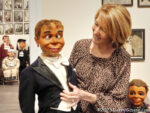 Cecil Wigglenose is another museum resident that I recognized. In addition to a wiggling nose, he has eyes, ears, a tongue, and hair that a ventriloquist can manipulate as demonstrated by curator and tour guide Lisa Sweasy. Lisa has been involved in the museum since 2000; first as curator, then as a Board of Directors member, then as both. I met Lisa at that 2021 open house but there were no tours that day. My earlier visit had been during those few years she stepped away from the curator role so today was the first I got to benefit from her knowledge. That knowledge is not just of the items in the collection but of the whole broad world of ventriloquism past and present. It’s pretty obvious she loves her job. I don’t think it is possible to get this good at something otherwise.
Cecil Wigglenose is another museum resident that I recognized. In addition to a wiggling nose, he has eyes, ears, a tongue, and hair that a ventriloquist can manipulate as demonstrated by curator and tour guide Lisa Sweasy. Lisa has been involved in the museum since 2000; first as curator, then as a Board of Directors member, then as both. I met Lisa at that 2021 open house but there were no tours that day. My earlier visit had been during those few years she stepped away from the curator role so today was the first I got to benefit from her knowledge. That knowledge is not just of the items in the collection but of the whole broad world of ventriloquism past and present. It’s pretty obvious she loves her job. I don’t think it is possible to get this good at something otherwise.
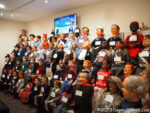 This is the second exhibit room. The next room has even more dummies (100+) in shoulder-to-shoulder rows. But both rooms have a fair amount of open space plus the room that precedes them on the tour is not densely populated at all. That’s not the way it used to be. Spaces in the old museum were smaller, more densely packed, and entered directly from the outside. In 2011, I described my first step into the museum as feeling like I was “late to a meeting where a crowd had already gathered”. That was much less the case today. The “walls of dummies” are good. They help convey the popularity of ventriloquism and the variety of figures used but it is nice to approach them without a jolt. This “wall” is organized by builder with color-coded tags. Esky (the Monopoly-man-looking guy in the opening picture) was made by the McElroy Brothers (yellow bordered tags). He’s near the center of this photo in the second row from the top.
This is the second exhibit room. The next room has even more dummies (100+) in shoulder-to-shoulder rows. But both rooms have a fair amount of open space plus the room that precedes them on the tour is not densely populated at all. That’s not the way it used to be. Spaces in the old museum were smaller, more densely packed, and entered directly from the outside. In 2011, I described my first step into the museum as feeling like I was “late to a meeting where a crowd had already gathered”. That was much less the case today. The “walls of dummies” are good. They help convey the popularity of ventriloquism and the variety of figures used but it is nice to approach them without a jolt. This “wall” is organized by builder with color-coded tags. Esky (the Monopoly-man-looking guy in the opening picture) was made by the McElroy Brothers (yellow bordered tags). He’s near the center of this photo in the second row from the top.
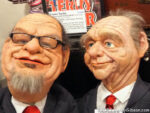
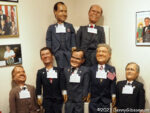 Occasionally a dummy is made to resemble its owner but that old line about “any resemblance to real persons, dead or alive, is purely coincidental” can be applied to the vast majority of them. Notable exceptions at the museum include this group of U.S. presidents and personal favorites Penn and Teller.
Occasionally a dummy is made to resemble its owner but that old line about “any resemblance to real persons, dead or alive, is purely coincidental” can be applied to the vast majority of them. Notable exceptions at the museum include this group of U.S. presidents and personal favorites Penn and Teller.
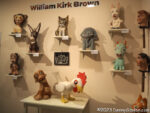 Like most museums, Vent Haven has some temporary exhibits although, in light of the recent welcome but exhausting building project, at present “temporary” probably means at least a year and maybe two. One of the current temporary displays features the work of William Kirk Brown who specialized in low-cost entry-level ventriloquial figures.
Like most museums, Vent Haven has some temporary exhibits although, in light of the recent welcome but exhausting building project, at present “temporary” probably means at least a year and maybe two. One of the current temporary displays features the work of William Kirk Brown who specialized in low-cost entry-level ventriloquial figures.
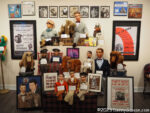 As might be expected, Vent Haven has displays dedicated to the world’s most famous ventriloquists. Edgar Bergen, Señor Wences, Shari Lewis, Paul Winchell, Jeff Dunham, and others have their own spots. When I was there in 2011, I was able to view but not photograph a temporary display honoring Jimmy Nelson. Jimmy died in 2019 at the age of 90 and now has this permanent display in the new museum.
As might be expected, Vent Haven has displays dedicated to the world’s most famous ventriloquists. Edgar Bergen, Señor Wences, Shari Lewis, Paul Winchell, Jeff Dunham, and others have their own spots. When I was there in 2011, I was able to view but not photograph a temporary display honoring Jimmy Nelson. Jimmy died in 2019 at the age of 90 and now has this permanent display in the new museum.
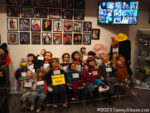 I believe Lisa said this was about half of the Class of 2023. In the past, I have read that the museum gets 10-15 donations per year. I’m guessing that there might not have been a Class of 2022 but I don’t know that. The picture shows one of many ways that the museum is taking advantage of technology. The archives contain enough photos to cover all of the walls many times over. Large monitors like the one shown here support viewing digitized versions of various large collections without using a large amount of physical space.
I believe Lisa said this was about half of the Class of 2023. In the past, I have read that the museum gets 10-15 donations per year. I’m guessing that there might not have been a Class of 2022 but I don’t know that. The picture shows one of many ways that the museum is taking advantage of technology. The archives contain enough photos to cover all of the walls many times over. Large monitors like the one shown here support viewing digitized versions of various large collections without using a large amount of physical space.
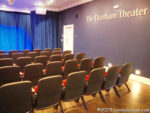 On the other hand, there is enough space in the new building to allow using a pretty good chunk of it in a theater. Lisa seemed to appreciate this bit of luxury as much as the parking spaces and restroom. Less obvious but equally important improvements include high-end HVAC to make the dummies feel good and museum-grade lighting to make them look good. Along with this major upgrade to the physical space there are some changes to the museum’s online presence. Tours can still be scheduled the old-fashioned way via telephone or email but they can also be scheduled directly via the museum’s website. That’s what I did and thought it worked quite well. Information and links for personally checking out the museum’s new digs yourself are here.
On the other hand, there is enough space in the new building to allow using a pretty good chunk of it in a theater. Lisa seemed to appreciate this bit of luxury as much as the parking spaces and restroom. Less obvious but equally important improvements include high-end HVAC to make the dummies feel good and museum-grade lighting to make them look good. Along with this major upgrade to the physical space there are some changes to the museum’s online presence. Tours can still be scheduled the old-fashioned way via telephone or email but they can also be scheduled directly via the museum’s website. That’s what I did and thought it worked quite well. Information and links for personally checking out the museum’s new digs yourself are here.
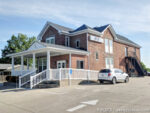
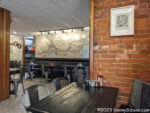 In my report of that 2011 visit, I told of stopping for breakfast a little less than three miles northeast of the museum so it seems appropriate to describe a stop for breakfast before this visit a little more than three miles southwest of the museum. I had tried stopping at The Hive once before but gave up after three passes through the completely filled parking lot. That reinforced all the good things I’d heard about the place and prompted me to get there a little earlier this time. Now I can say good things myself. In 2011, I had a goetta and cheese omelet at the Anchor Grill. Today I had a goetta and cheese and mushroom omelet.
In my report of that 2011 visit, I told of stopping for breakfast a little less than three miles northeast of the museum so it seems appropriate to describe a stop for breakfast before this visit a little more than three miles southwest of the museum. I had tried stopping at The Hive once before but gave up after three passes through the completely filled parking lot. That reinforced all the good things I’d heard about the place and prompted me to get there a little earlier this time. Now I can say good things myself. In 2011, I had a goetta and cheese omelet at the Anchor Grill. Today I had a goetta and cheese and mushroom omelet.
 The sun has set on the first day of the first “normal” Society Society for Commercial Archeology conference since 2019. The 2023 conference started Wednesday, May 31, in Erie, PA. The 2023 Jefferson Highway Association conference begins next Wednesday. The JHA’s first post-COVID conference took place last year but the site of this year’s conference (Mason City, IA) is where the pandemically postponed conferences of 2020 and 2021 were to take place. The Lincoln Highway Association also broke out of the COVID pause last year and will have things ready to go this year in Folsom, CA, starting June 12. There was a brief moment when I thought I might make it to all three conferences but reality soon set in. The logistics of getting to California following the conference in Iowa were just too much of a challenge for me. With apologies and sadness, the LHA conference was dropped. I will be attending the other two and there’s not a whole lot of time between them. What time there is will be spent in a fairly direct crossing of Ohio, Indiana, and Illinois. They have separate journals with a switch to the JHA trip planned after the last day of the SCA conference.
The sun has set on the first day of the first “normal” Society Society for Commercial Archeology conference since 2019. The 2023 conference started Wednesday, May 31, in Erie, PA. The 2023 Jefferson Highway Association conference begins next Wednesday. The JHA’s first post-COVID conference took place last year but the site of this year’s conference (Mason City, IA) is where the pandemically postponed conferences of 2020 and 2021 were to take place. The Lincoln Highway Association also broke out of the COVID pause last year and will have things ready to go this year in Folsom, CA, starting June 12. There was a brief moment when I thought I might make it to all three conferences but reality soon set in. The logistics of getting to California following the conference in Iowa were just too much of a challenge for me. With apologies and sadness, the LHA conference was dropped. I will be attending the other two and there’s not a whole lot of time between them. What time there is will be spent in a fairly direct crossing of Ohio, Indiana, and Illinois. They have separate journals with a switch to the JHA trip planned after the last day of the SCA conference.
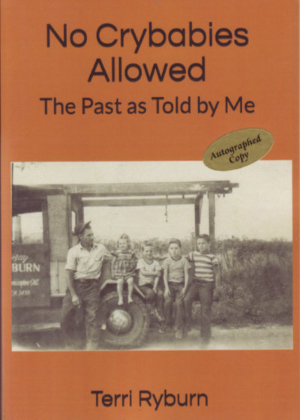 I know Terri Ryburn as the owner of historic Sprague’s Super Service in Normal, Illinois, and as a key ingredient in the Miles of Possibility Route 66 Conferences. I know the picture on the cover of the book from a copy hanging on the wall of the former gas station that Ryburn has turned into a Route 66 information center, gift shop, and photo op. I knew that was Terri seated on the fender with her dad and older brothers standing beside her because she told me when I spotted the photo on the wall. She may have told me that the photo contained only half of her total family but if she did I forgot. From reading No Crybabies Allowed I learned (or maybe relearned) that, while Terri was the youngest family member in this particular photo, she would be in the elder half of eight children after two more brothers and two sisters came along. None were crybabies.
I know Terri Ryburn as the owner of historic Sprague’s Super Service in Normal, Illinois, and as a key ingredient in the Miles of Possibility Route 66 Conferences. I know the picture on the cover of the book from a copy hanging on the wall of the former gas station that Ryburn has turned into a Route 66 information center, gift shop, and photo op. I knew that was Terri seated on the fender with her dad and older brothers standing beside her because she told me when I spotted the photo on the wall. She may have told me that the photo contained only half of her total family but if she did I forgot. From reading No Crybabies Allowed I learned (or maybe relearned) that, while Terri was the youngest family member in this particular photo, she would be in the elder half of eight children after two more brothers and two sisters came along. None were crybabies.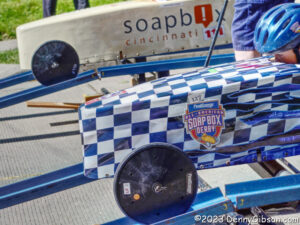
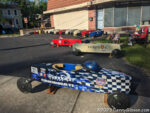
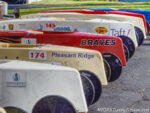

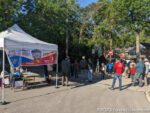
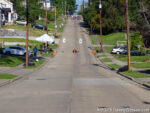






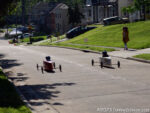
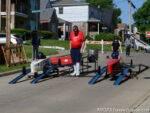

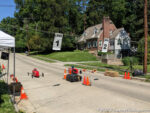

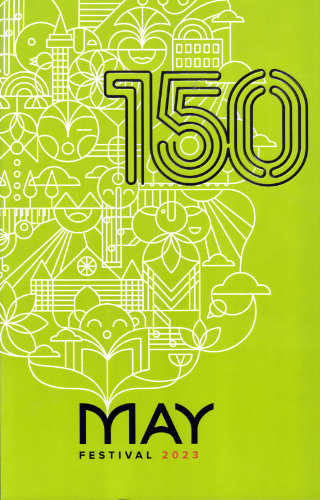 I did better this year than last, and last year I did better than in any of the preceding 148. As explained in a blog post (
I did better this year than last, and last year I did better than in any of the preceding 148. As explained in a blog post (